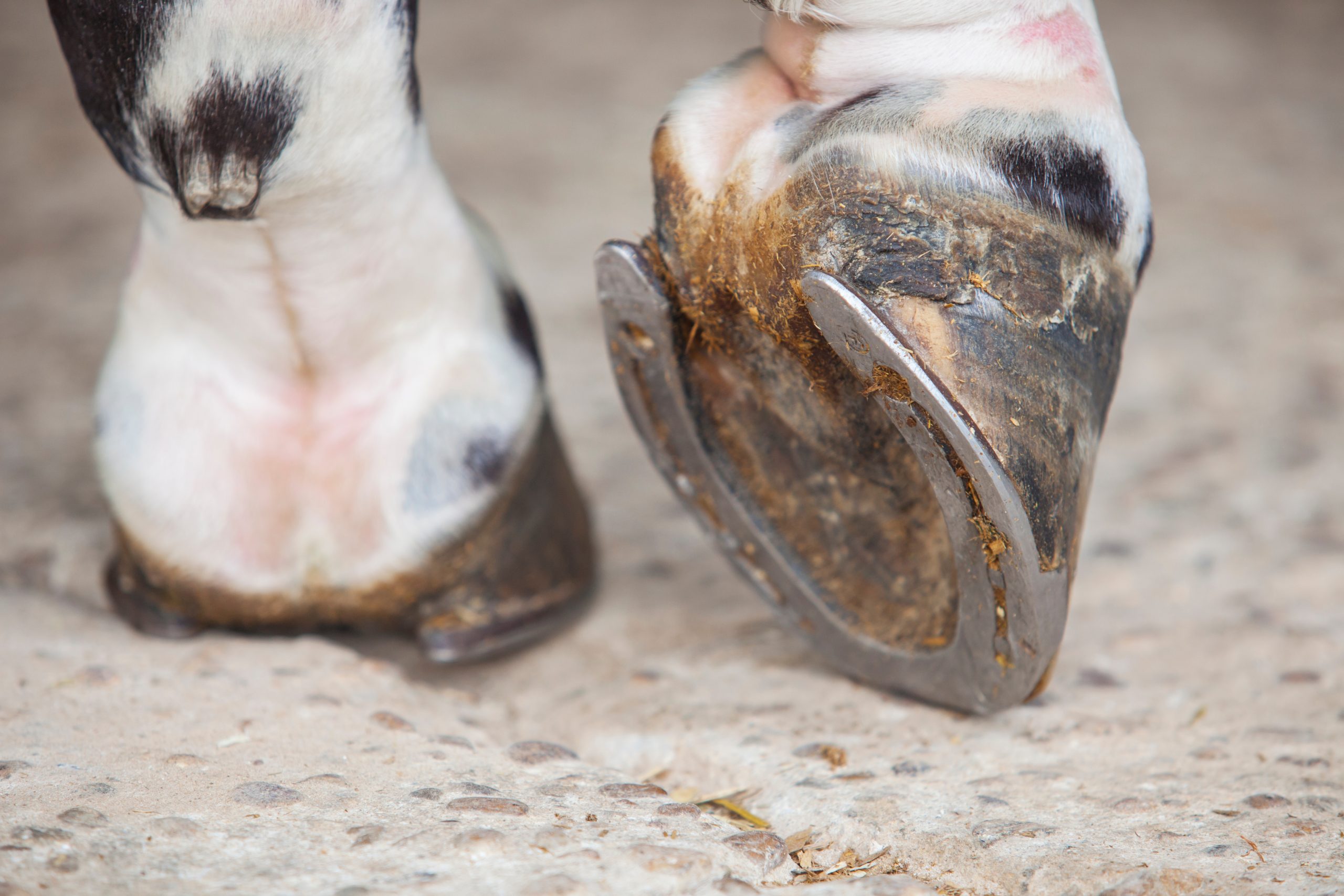Have you ever looked at your horses’ hooves and wondered how they form the way they do? Or do you just hope the farrier takes care of them? As a bodyworker, I know a lot about a horse before I lay my hands on them. I can tell where they are compensating, where they may be sore, and where they are tight. I can tell what direction is harder than the other and why they’ve developed asymmetry in their body. A horse’s hooves are a living record of how the horse moves, how it distributes its weight, and even how it compensates for discomfort elsewhere in its body.
Wear patterns tell a story by showing patterns of use. Toe worn more than heels may suggest the horse lands toe-first, often linked to sore heels, navicular changes, or poor hoof balance. This horse will be tighter in the shoulder. Heels worn more than toes might mean the horse lands heel-first, which can indicate healthy biomechanics but may also suggest compensation if the toe is too long. Uneven wear often reveals crooked movement, such as toeing in or toeing out.
Flares and distortions reflect imbalance, by presenting itself as flaring or stretching of the hoof wall. This can signal that the horse habitually loads one side of the foot more than the other. Over time, this imbalance not only changes the hoof’s appearance but also strains tendons and joints higher up the leg. In observing a horse with higher heels and narrow toes, contracted tendons may be the cause. Tighter muscles and ligaments higher up in the body- including intercostals behind the shoulder, elbow, and in the girth area, can cause this problem. Releasing these muscles through bodywork can change the way the hooves grow over time.
Hoof cracks, splits, or frequent chipping can point to abnormal stress. A persistent quarter crack might reveal that the horse loads one side of the hoof excessively during movement. While genetics and environment play a role, recurring cracks usually mean the horse’s gait or trim is out of sync with its natural biomechanics.
Growth rings in hooves are timelines of stress. Horizontal growth rings can indicate changes in diet, environment, or stress. When they diverge (closer together on one side than the other), they often reveal uneven loading during movement. It’s like the hoof is recording every stride, telling you where pressure has been applied.
Watching the landing patterns and breakover of how the hoof strikes the ground will tell you how the horse manages motion. Toe-first landing can indicate discomfort in the heels, digital cushion, or deep flexor tendon. Heel-first landing is generally a sign of healthy shock absorption. A delayed breakover (when the hoof seems to “stick” before lifting) often relates to long toes or weak heels, which can affect stride length and put strain on joints.
Having some basic understanding of horses’ hooves and how they can shine a light on a horse’s movement could provide an early warning sign to issues before bigger problems arise. By learning to “read” hooves, you can catch gait abnormalities early, improve your horses’ comfort, and support long-term soundness and athletic ability.
The old saying “no hoof, no horse” is more than a cliché, it’s a truth rooted in observation. A horse’s hooves are both foundation and feedback system, showing you not just where the horse has been, but how it moves and how it feels. Next time you pick up your horse’s hoof, take a closer look. The story might surprise you.

